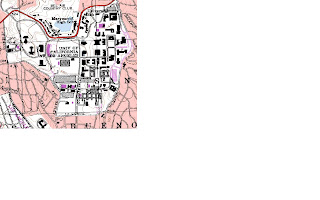View The biggest tennis tournaments in the world in a larger map
Neogeography means "new geography". To be more precise, and from the definition on Wikipedia, it is "the application to the usage of geographical techniques and tools used for personal and community activities or for utilization by a non-expert group of users". When we think about it, we use neogeography in our everyday lives. For example, when we want to go to public affairs to do the lab for geography 7, we walk through bruinwalk, then walk towards North Campus to reach Bunch, then Public affairs. However, there are many paths to get there and all of us have different paths. This is why we have neogeography. We use a map and we make our decisions on what directions to choose to go from place to place. However, we do not necessarily have to have our own map. We could make our own map.

